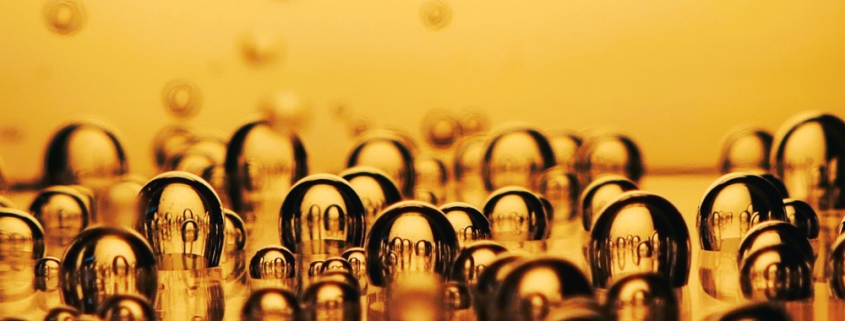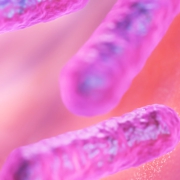LNG or emulsion fuels – whats it gonna be
It’s a thorny question. And not one with a clear-cut answer possible. But I have been exposed to both and will jump into the snakepit for you. LNG or Emulsion Fuels?
Those who have gone through my LinkedIn profile (and others) will not have missed out on the fact that until last year I have been one of the founding members of a Miami fuels outfit. Its scope was simple. Emulsion fuels are going to rock the planet.
Now you will ask yourself why I am back on LNG if Emulsion Fuels is such a big thing. I don’t want to bore you with little trivialities such as my wife who wanted to stay in Vienna or my kids who would have missed their families and friends – that admittedly plays a rather big role in such decisions. But the core of the matter is that looking into something else sometimes makes you realize how incredibly powerful the thing you have left behind really is.
LNG is such a thing. It’s the real boat rocker. Are emulsified fuels a failure then? No way. As with all those developments, any news on great advances in emulsified fuel technology must be taken with a heavy dose of salt but the LNG world is full of hype either so let’s cut it with grace.
Here is it short and crisp – on balance and fundamentally Emulsion Fuels work. Now the disclaimer: that does not mean that it works in any instance that the technology is easy to handle or that there is no BS there. There is plenty of it. If you look into Emulsion Fuels you do your Due Diligence. I will not accept any responsibility for your bad decisions.
So much for the soldiers of fortune. There is also a solid kernel of science behind Emulsion Fuels and I have seen it work personally so I am not one of the guessers.
Back to basics – what is emulsified fuel? The core rationale is simple – you mix water into fuel to stretch it which in turn increases your fuel supply and the mileage you get out of a gallon of undiluted fuel.
That sounds crazy, isn’t it? One thing you learn in chemistry class is that water and fuel don’t mix and water has a deleterious effect on the flammability of fuel. That sure cannot be a good thing during the combustion process. Besides, if there is one thing you don’t want in your engine block it is water in contact with piping, tanks, and engine parts.
In emulsification, you not only mix the fuel with water. The emulsification process is a multi-stage process that bonds the fuel to the water at the molecular level so the emulsion does not separate anymore and hence can be considered stable.
How does it happen? In the first step, the fuel is preconditioned which usually means a shearing step. Imagine that as some sort of fuel grinder that breaks down the fuel droplets into smaller and smaller sizes. For those new to fuels – Middle Distillates such as Diesel or Kerosene are no liquids like water. When you look at water under the microscope it will always look the same until you reach the molecular level.
Middle Distillates, on the other hand, start looking like a sea of differently sized droplets at a certain point – usually 80 to 120 nanometers big. If unmodified, those droplets enter the combustion chamber as is and burn on the surface. The more surface there is, the better the burn so smaller droplets make for better burns, more energy extracted from the fuel, and less soot and other particulates as they tend to form as a result of incomplete burns.
The shearing process is purely mechanical and breaks the droplets down to about 10 nanometers in size. Then the fuel is ionized (receives an electrical charge) to make it easier to pull negatively charged water into the droplets. Then the water is added. The percentage is anyone’s little secret but you imagine that too much water will cause stability problems.
When done right, the resulting emulsion is stable but to seal things off, an additive is usually given as another layer wrapping the new droplet. This usually ensures, that no water ever touches any part of the tank or the engine and it also improves the stability of the fuel. Besides, it prevents microbial growth.
What sounds rather simple and straightforward is a twisted and contorted affair with lots of trial and error before it works. Now we have emulsion fuel. Let’s come to the combustion process as it is there where the real magic happens.
The droplet enters the combustion chamber. Temperature and pressure in the combustion chamber immediately turn the water into dry steam. What happens when a liquid turns into gas? As LNGholics we are aware. Rapid expansion. The water bursts the layer of fuel around it into even smaller droplets – sub-nanometers – and then this cloud of infinitely small droplets burns on the surface.
But the combined surface of the much smaller droplets now burns much more efficiently and as they do so no kernel of soot and dust can form. Hence, virtually no fine particles which are a huge health concern otherwise.
That’s the theory. Practically it’s a lot of fine-tuning and experimenting with the right kinds of additives. There are hundreds of thousands out there.
Let’s now come back to the original sin – or question. Will Emulsion Fuels or LNG carry the water?
My shortcut: they are not comparable as they are two entirely different things. Emulsion Fuels will be most effective in the Heavy Fuels sector which can have another lease of life in the new cleaner world. That’s not LNG’s patch as I think LNG will take on King Diesel.
Then, Emulsion Fuels is a niche technology that will never be anything else than a bridge towards a much better future with fundamentally better fuels such as LNG. LNG, on the other hand, is the paradigm change. You will say now that it is a bridge fuel too but in a sense everything is.
I call a bridge something where I know where the journey leads. I know that LNG looms and that Emulsions will only smoothen the transition. That’s a bridge solution. But what will come after LNG? There is a lot of speculation – but that’s already it. Speculation – like we speculated 40 years ago that there will be cities with thousands of inhabitants on the moon by 2000. Reality looked a bit different.
LNG is a safe bet. We know the technology. It’s super clean. It can be renewable (let’s not call it LNG then anymore). And it’s an economical solution – that’s safe to say.
For me, it’s pretty simple. If I had a vessel that has still a long economic life I would rather go with Emulsion than retrofit with LNG. In the end, Emulsion does not require you to change your engines or tanks or …
If on the other side, I was a regional shipper who does lots of ferrying on predictable patterns and I had to buy a new ship I would go LNG straight.
Oh, Emulsions with diesel work but as those trucks are being replaced on a much quicker clip than ships, I see LNG making inroads much quicker as well.
Anyway, I picked my poison and it sure is LNG. Sorry, my bubbly friends.


















Diesel will continue to be our main source of energy in the transportation industry for the next half century or more. Limitations in the emulsified fuel industry have been overcome by our onboard diesel water emulsion system. Please check out http://www.fiercefuelsystems.com for more details.
Thank You.
Jonathan, I am not so sure on the half a century claim but its going to take a while until diesel goes out of the picture. Time enough for emulsification technology to make a ruckus.